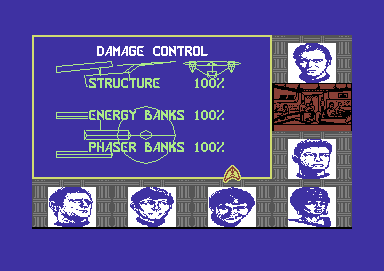Retro Replay Review
Gameplay
Star Trek: The Rebel Universe blends graphical adventure with light real-time combat and strategic ship piloting to create a hybrid experience that will appeal to fans of both genres. You spend the bulk of your time navigating the Sagittarius Arm on the Enterprise’s star chart, plotting courses to planets, space stations, and Klingon-held systems before the Klein Sphere is sealed. On the surface, exploration follows a point-and-click model: beam down, investigate planetary surfaces, collect artifacts, and decipher clues that point the way forward.
(HEY YOU!! We hope you enjoy! We try not to run ads. So basically, this is a very expensive hobby running this site. Please consider joining us for updates, forums, and more. Network w/ us to make some cash or friends while retro gaming, and you can win some free retro games for posting. Okay, carry on 👍)
The real-time combat sequences kick in when hostile vessels or Klingon mutineers appear on the starmap. You take direct control of the Enterprise, juggling shields, phaser banks, torpedo launches, and occasional evasive maneuvers. While the action can feel a bit clunky by modern standards—keyboard hotkeys and numeric menus were the norm—the tension of a sudden Klingon ambush keeps the nerves sharp.
Puzzles form the backbone of the game’s progression. Some are inventory-based, requiring you to combine or use items found during away missions, while others hinge on dialogue choices with your crew and allied traders. Because Starfleet has limited intel on what’s driving the mutiny, there are multiple paths to uncovering the truth. Whether you side-step a heavily guarded world by seeking out a smuggler’s route or negotiate access to classified archive records, your decisions shape the final outcome.
Graphics
Visually, Rebel Universe reflects early ’90s PC artistry with its 256-color VGA palette and richly detailed 2D backdrops. Starships, alien marketplaces, and rocky planetary vistas are all hand-drawn, lending a painterly aesthetic that holds up surprisingly well when viewed through the lens of nostalgia. Subtle animations—spinning starfields, flickering control panels, and phaser blasts—add life to otherwise static screens.
The user interface leans heavily on icons and dropdown menus, arranged around a central viewport of the galaxy map or away-mission environment. It isn’t always intuitive—hover tooltips are sparse, and some commands hide within nested menus—but once you learn the hotkeys for warp, beam-down, and weapons systems, navigation feels more fluid. Color-coded status bars for shield strength, hull integrity, and crew morale keep you aware of your ship’s condition during skirmishes.
Cutscenes and transition graphics are modest by today’s standards but carry a distinct charm. A brief still image might accompany a narrative reveal or a conversation with a Klingon commander. These moments rely on text and voice-over style narration rather than high-fidelity animation, so players invested in the written word and Star Trek lore will be rewarded more than those chasing cinematic flair.
Story
The central narrative thrust is compelling: a Federation mutiny has spread through the Sagittarius Arm, with rogue vessels defecting to the Klingon cause. Starfleet’s solution—a Klein Sphere to quarantine the region forever—raises the stakes immediately. It’s a desperate gambit that risks isolating entire star systems and igniting war with the Romulans if the sphere remains permanent.
The Enterprise’s five-year mission to investigate the mutiny drives the game’s episodic structure. Each star system you visit can yield fresh clues—encrypted logs, enigmatic crystal artifacts, or testimonies from shaken colonists. As a player, you piece together a galaxy-wide conspiracy tied to an ancient alien intelligence, weighing the moral and strategic consequences of each revelation. Do you rescue rebels and risk compromise, or do you enforce Starfleet’s policy at the cost of innocent lives?
Dialogue options and branching solutions make the story highly replayable. You might broker an alliance with a dissident Klingon warlord in one playthrough or discover a smuggler’s black market that turns the tide in another. The multiple endings hinge on whether you manage to lift the Klein Sphere, preserve Federation unity, or inadvertently spark a larger interstellar conflict. It’s a narrative loop that encourages exploration and experimentation.
Overall Experience
Star Trek: The Rebel Universe is an ambitious title that dares to marry adventure-game storytelling with the unpredictability of real-time strategy. Its pacing can feel slow—crossing vast star systems, carefully managing resources, and enduring dialogue-heavy scenes require patience—but for players who relish methodical problem-solving, it’s a rewarding journey.
The game’s learning curve is moderate to high. Early on, you’ll spend time fumbling through ship controls and deciphering puzzle logic. However, once you grow accustomed to the interface and the balance between exploration, negotiation, and combat, the thrill of outsmarting a Klingon ambush or unearthing a hidden alien archive more than justifies the effort.
Overall, Rebel Universe stands as a unique chapter in Star Trek gaming. It isn’t a quick action-blaster, nor a linear narrative—it’s a sprawling mission with genuine consequences for every choice you make. If you’re a Trekkie looking for a story-driven voyage or a classic adventure-strategy hybridist craving multiple solutions, the Enterprise’s call to action in the Sagittarius Arm remains as engaging today as at launch.
 Retro Replay Retro Replay gaming reviews, news, emulation, geek stuff and more!
Retro Replay Retro Replay gaming reviews, news, emulation, geek stuff and more!









Reviews
There are no reviews yet.